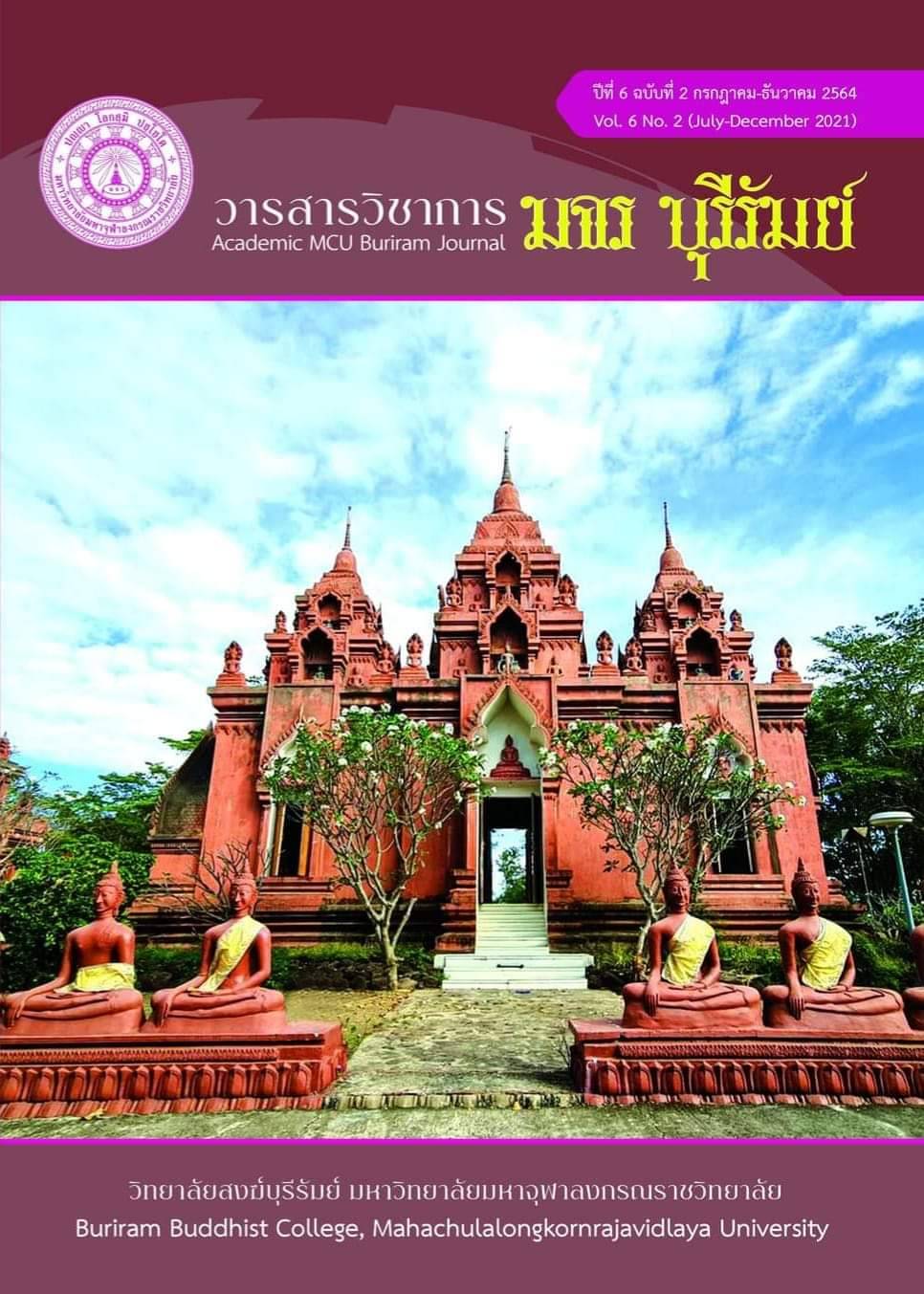A Comparative Study of the Pramatthasaccha in Theravada Buddhist Philosophy and Ultimate Reality in Vedanta Philosophy
Keywords:
Paramattha-sacca, Ultimate Reality, Theravada Buddhist Philosophy, Vedanta PhilosophyAbstract
The thesis on “A Comparative Study of the Paramattha-Sacca in Theravada Buddhist Philosophy and Ultimate Reality in Vedanta Philosophy”. The purpose are, (1) to study of the Pramatthasacca in Theravada Buddhist philosophy, (2) to study of Ultimate Reality in Vedanta Philosophy, and (3) a comparative study of the Pramatthasacca in Theravada Buddhist philosophy and Ultimate Reality in Vedanta Philosophy.
The research result finds that:
The Pramattasacca means the Truth, the Supreme Truth, which are four kinds in Theravada Buddhist Philosophy namely Mind, Mental factors, Matter and Nibbana. There two kinds of Nibbanas in Theravada Buddhist philosophy namely 1) Sapadhisesa Nibbana 2) Anupadhisesa Nibbana.
The Buddha who discovered Reality have present the process of performing the highest truth which must follow the Trisikha principle, which is the precepts, meditation and wisdom, and the practice of Vipassana is the consideration of all things to see the truth in the Four Noble Truths, as the Lord Buddha saw this reality and practiced Magga. (1) Sammaditthi ; right view (2) Sammasangkappa ; right thought (3) Sammavaca; right speech (4) Sammakammanta Right action (5) Samma-ajiva ; right livelihood (6) Sammavayama ; right effort (7) Sammasati ; right mindfulness (8) Sammasamadhi ; right concentration which is a practice to Nirvana And is the highest truth in Theravada Buddhism.
The Ultimate Reality in Vedanta philosophy is Brahman which is Ultimate Truth, eternal reality and immortal, origin of Atman which are in everything. There two kinds of Brahman in Vedanta philosophy of Brahmanism namely Para-Brahman and Apara-Braman. In the practice to reach the Braman or Ultimate Reality, there three ways as Bhakti Yoga, Karma Yoga and Jnana Yoga. Bhakti Yoga is a method of practicing with faith. Karma Yoga is a method of performing goodness and seriously acting by the caste. Jnana Yoga is a method of approaches to reach Brahman with wisdom or realization. After following these 3 guidelines, it will clear the mind from the circle of death and birth into moksha which is to reach Brahma. Therefore, reaching out to Moksha is the realization of Ultimate Truth of Vedanta philosophy.
References
มหาจุฬาลงกรณราชวิทยาลัย. (2535). พระไตรปิฎกภาษาไทย ฉบับมหาจุฬาลงกรณวิทยาลัย. กรุงเทพมหานคร: โรงพิมพ์มหาจุฬาลงกรณราชวิทยาลัย.
กฤษณะ สังคีตทาน. (2541). ภควัท-คีตา. แปล ฉบับเดิม เล่ม 1-2. กรุงเทพมหานคร: สามัคคีสาร.
กีรติ บุญเจือ. (2522). รายงานผลการวิจัยปรัชญาอินเดีย. กรุงเทพมหานคร: จุฬาลงกรณ์ มหาวิทยาลัย.
จำนงค์ ทองประเสริฐ. (2539). ศาสนาปรัชญาประยุกต์. กรุงเทพมหานคร: ต้นอ้อ.
จรูญ วงศ์สายัณห์. (2519). หลักธรรมในศาสนาพราหมณ์- ฮินดู. กรุงเทพมหานคร: กรมการศาสนา กระทรวงศึกษาธิการ.
ไพฑูรย์ พัฒน์ยิ่งใหญ่. (2530). ความคิดสำคัญในปรัชญาอินเดีย. กรุงเทพมหานคร: สำนักพิมพ์โอเดียนสโตร์.
สมภาร พรมทา. (2547). ภควัทคีตา (บทเพลงแห่งองค์ภควัน). กรุงเทพมหานคร: ศยาม.
สนั่น ไชยานุกูล. (2519). ปรัชญาอินเดีย. กรุงเทพมหานคร: มหาจุฬาลงกรณราชวิทยาลัย.
สมัคร บุราวาส. (2554). ปรัชญาพราหมณ์ในสมัยพุทธกาล. พิมพ์ครั้งที่ 2. กรุงเทพมหานคร: สำนักพิมพ์สยาม.
สุมาลี มหณรงค์ชัย. (2546). ฮินดู-พุทธจุดยืนที่แตกต่าง. กรุงเทพมหานคร: สำนักพิมพ์สุขภาพใจ.
สุนทร ณ รังษี. (2545). ปรัชญาอินเดีย: ประวัติและลัทธิ. กรุงเทพมหานคร: โรงพิมพ์จุฬาลงกรณ์ มหาวิทยาลัย.
สุนทร ณ รังษี. (2550). พุทธปรัชญาในพระไตรปิฎก. พิมพ์ครั้งที่ 3. กรุงเทพมหานคร: จุฬาลงกรณมหาวิทยาลัย.
อดิศักดิ์ ทองบุญ. (2524). ปรัชญาอินเดีย. กรุงเทพมหานคร: ราชบัณฑิตยสถาน.
S. Radhakrishnan. (1962). Indian Philosophy. Vols. I. II. 7th ed. London: Geoge Allen & Urwin Ltd.
S. Radhakrishnan. (1997). The Principal Upanisads. New Delhi: Harper Collins Publisher.
Downloads
Published
How to Cite
Issue
Section
License
ทัศนะและความคิดเห็นที่ปรากฏในบทความวารสารฉบับนี้ถือเป็นความรับผิดชอบของผู้เขียนบทความนั้น ไม่ถือเป็นทัศนะและความรับผิดชอบของบรรณาธิการ





